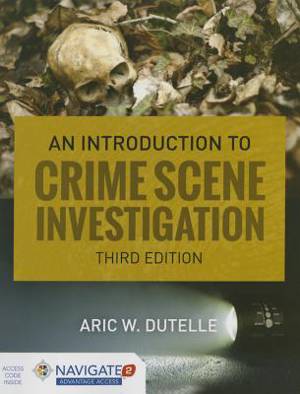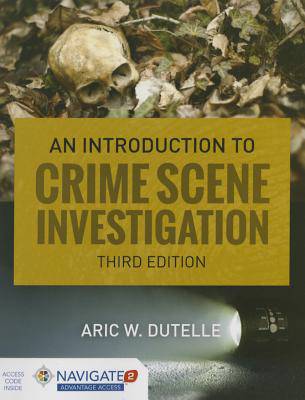
Door een staking bij bpost kan je online bestelling op dit moment iets langer onderweg zijn dan voorzien. Dringend iets nodig? Onze winkels ontvangen jou met open armen!
- Afhalen na 1 uur in een winkel met voorraad
- Gratis thuislevering in België vanaf € 30
- Ruim aanbod met 7 miljoen producten
Door een staking bij bpost kan je online bestelling op dit moment iets langer onderweg zijn dan voorzien. Dringend iets nodig? Onze winkels ontvangen jou met open armen!
- Afhalen na 1 uur in een winkel met voorraad
- Gratis thuislevering in België vanaf € 30
- Ruim aanbod met 7 miljoen producten
Zoeken
€ 76,95
+ 153 punten
Uitvoering
Omschrijving
In a world heavily influenced by popular forensic television dramas, the real-life duties and complexities involved in crime scene investigation are often misrepresented and misunderstood. An Introduction to Crime Scene Investigation, Third Edition is a comprehensive and accurate overview of the practical application of forensic science in crime scene investigation. Focusing on the day-to-day aspects, this full-color text describes the methodologies and technologies employed by crime scene personnel, and pushes the reader to identify the interrelated components of the investigative process. Recognizing the importance of those who have contributed to and advanced the field of forensic science, the reader is introduced to crime scene investigation through a historical perspective. The updated Third Edition covers components not typically found in many crime scene texts, including ethical considerations and public misconceptions of the investigative process--the so-called "CSI Effect." Extensive discussion of physical evidence examination and analysis is provided, including the forensic potential of physical evidence, crime scene procedures, and what evidence should be documented, collected, and preserved. Real-life examples over 250 detailed, full-color photos and figures enhance comprehension and demonstrate specific strategies for technique application While the vast majority of the text is written with an American audience in mind, the author has chosen to call upon his significant international experience and include cases, information, and photographs/figures which are external to the United States. Examples of these include: Photographs from Honduras, France, Haiti and Uganda. Ripped from the headlines involve cases which occur in or discuss: Canada, Germany, Italy, Pakistan, Mexico, Brazil, Russia, Yemen and Spain Historical development of CSI incorporates India, Japan, Great Britain, France, Canada, Argentina and China Sources of reference originate from: Canada, Great Britain, France, Germany and Australia While the specific laws discussed refer to American courts and decisions, the science and methodologies are ones which are recognized as best-practices around the globe, as pertains to the scientific investigation of crime scenes. An Introduction to Crime Scene Investigation, Third Edition is an invaluable reference and essential educational resource.
Specificaties
Betrokkenen
- Auteur(s):
- Uitgeverij:
Inhoud
- Aantal bladzijden:
- 646
- Taal:
- Engels
Eigenschappen
- Productcode (EAN):
- 9781284108149
- Verschijningsdatum:
- 2/02/2016
- Uitvoering:
- Paperback
- Formaat:
- Trade paperback (VS)
- Afmetingen:
- 175 mm x 226 mm
- Gewicht:
- 816 g

Alleen bij Standaard Boekhandel
+ 153 punten op je klantenkaart van Standaard Boekhandel
Beoordelingen
We publiceren alleen reviews die voldoen aan de voorwaarden voor reviews. Bekijk onze voorwaarden voor reviews.











